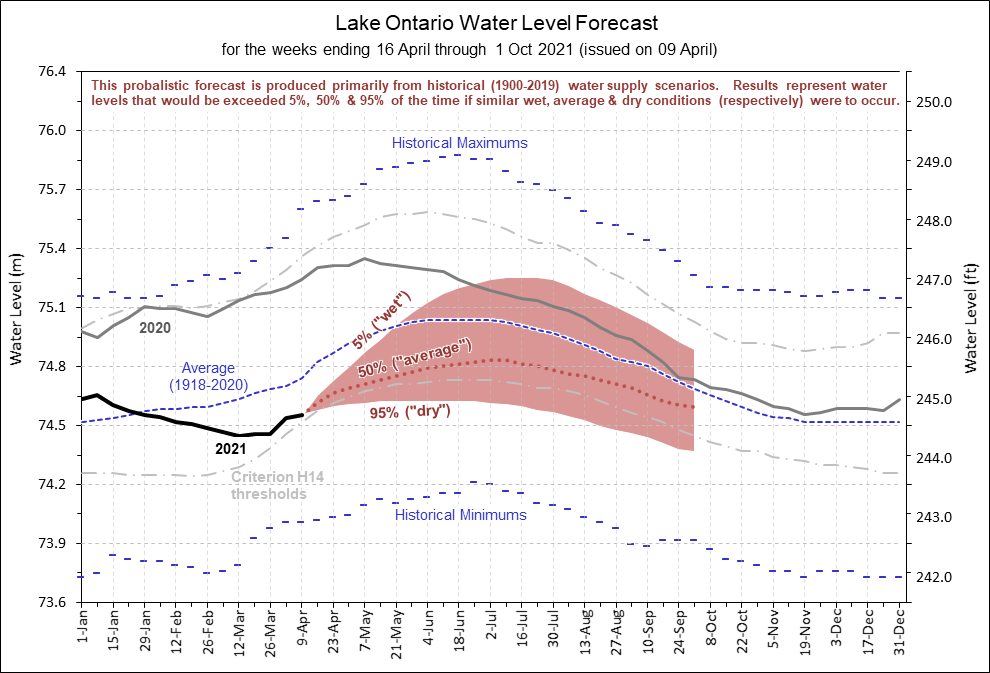Originally published on 4/13/2021 by the International Lake Ontario – St. Lawrence River Board
Lower than average precipitation and winter snowpack runoff have resulted in decreased inflows to Lake Ontario. The reduced inflows have resulted in lower water levels on Lake Ontario and the St. Lawrence River. In response to these conditions, the Board has decided to reduce outflows from Lake Ontario beginning on 10 April, 2021.
During January and February this year, the Board was deviating under authority granted by the International Joint Commission (IJC) to remove additional water from Lake Ontario as a result of the risk analysis in December 2020 showing approximately a 28% chance of water levels exceeding a damaging high water threshold in 2021. A total of 9.4 cm (3.7 in.) was removed from Lake Ontario to further reduce the risk of potentially damaging high water levels in late Spring and early Summer.
Due to the reduced spring runoff, the Board has decided to reduce outflows below those specified by the plan to restore the extra water removed during the winter to Lake Ontario at a rate of approximately 2 cm (0.8 in) of water to Lake Ontario per week for the next three weeks. After these 3 weeks, the Board will revert to plan-prescribed outflows.
This strategy will allow Lake Ontario and Lake St. Lawrence water levels to increase more than they would under plan-prescribed flows over the next few weeks. It now appears likely that Lake Ontario levels will remain below long-term average over the summer unless very wet weather occurs. Most forecast scenarios suggest that Lake Ontario levels will remain above critical low water level thresholds due to lower than average precipitation. Under this strategy, water levels in Lake St. Lawrence will experience short term increases as a result of its position as forebay of the Moses-Saunders Dam. However most forecast scenarios indicate dry conditions that will likely result in significantly below average Lake St. Lawrence levels this spring and summer.
This strategy is expected to have negligible impacts at Lake St. Louis near Montreal compared with the other strategies considered. Lake St. Louis levels may be up to 10 cm lower than they would be under plan-prescribed flows for the next few weeks. However, most forecast scenarios suggest that Lake St. Louis levels will remain above critical low-level thresholds for the spring and summer.
The Board will continue to monitor conditions closely through the summer. Should dry conditions persist, the Board will meet again regularly to discuss potential actions to adjust outflows.
Information on hydrologic conditions, water levels and outflows, including graphics and photos, are available on the Board’s website and posted to the Board’s Facebook page, and more detailed information is available on its website.

